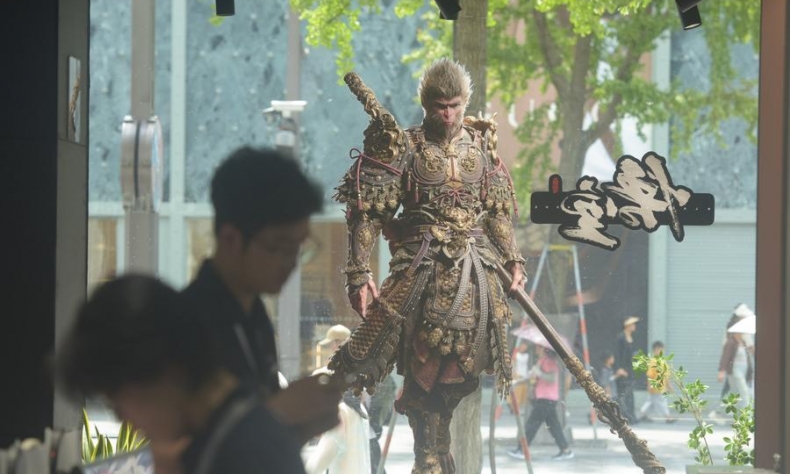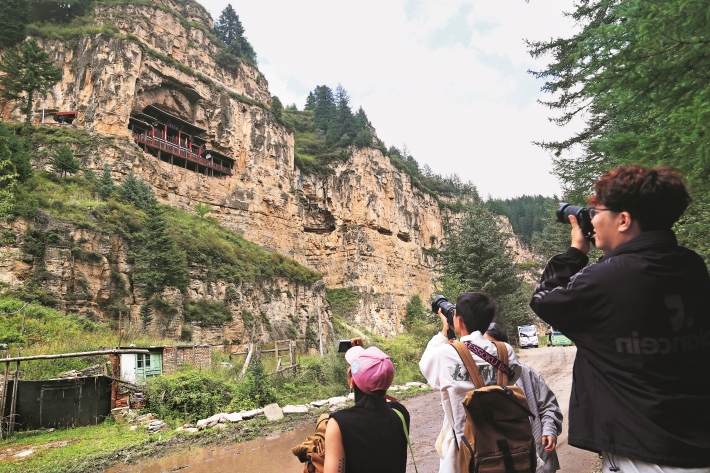Pilgrimage in Pixels

The popularity of the game extends beyond the domestic market, offering foreign players a new way to discover Chinese culture.
China is becoming the world’s largest video game market, with sales expected to exceed 300 billion yuan ($42.3 billion) by 2023. Long dominated by mobile games, the market is undergoing a significant shift, with more and more Chinese gamers expressing a desire for more sophisticated video game experiences, epitomised by the so-called “AAA” games. These games, considered the pinnacle of the industry, feature stunning graphics, advanced interactivity and rich storylines.
On 20 August, Black Myth: Wukong was released on Steam, one of the world’s leading video game platforms. Developed by Chinese studio Game Science, the game immediately captured the attention of the community with its immersive oriental universe, authentic mythological stories and addictive gameplay. Within an hour of its release, the game became one of the most popular games on Steam. Within three days of launch, over 10 million copies were sold across all platforms. In addition to its aesthetic and cultural qualities, the game has sparked passionate discussion in the industry and among gamers. Its success also testifies to the growth of the Chinese game industry, thanks to its remarkable quality.
Idealism meets realism
For many people, creating a major video game from scratch is a daring challenge, fraught with pitfalls and uncertainties. Feng Ji, managing director of Game Science, is well aware of this. He admits that the team has reached this stage not by ideals alone, but by relying on pragmatism to achieve sustainable growth. “Idealistic aspirations need to be translated into concrete actions,” he said. “Just like The Journey to the West, the most important thing is to take the first step.”
The development team invested seven years in its creation, photographing historic sites across China, painstakingly restoring ancient sculptures and buildings using 3D scanning, and employing techniques designed to ensure total immersion. Its attention to detail and exacting standards of quality have led to the international success of the game.
The success of this game lies not only in its visual quality, but also in its deep integration with traditional Chinese culture. While playing the game, users will have the opportunity to discover cultural elements from one of the country’s four great literary classics, The Journey to the West, which recounts the adventures of a monk and his three disciples, including the legendary Monkey King Sun Wukong. The development team has also skilfully integrated Chinese architecture, poetry, painting, calligraphy, music and costumes to give players a rich and fascinating experience of Chinese culture.

Bridging the virtual and real worlds
The fame of Black Myth: Wukong is not limited to the game itself; it has also spawned a boom in cultural tourism. After discovering the game, many players have shown a growing interest in the landscapes and cultural elements depicted in the game, and have taken trips to explore these places. The culture and tourism departments of provinces such as Shanxi and Zhejiang have seized this commercial opportunity by displaying promotional videos on their sites and organising various activities, all of which have helped to attract large numbers of visitors.
In total, 27 of the 36 sites photographed and digitised in the game are located in Shanxi Province. Most of these sites contain treasures of traditional Chinese wooden architecture. Thanks to intensive promotion of the game, these panoramic sites, initially little known, have gradually become popular tourist destinations. According to the managers of the Jade Emperor Pagoda in Jincheng, the number of visitors reached a record high this summer, and around 40 percent of them discovered the existence of this historic attraction thanks to the game. This was the case for Li Ruhang, an art teacher at a primary school in Guangdong.
“This time I came as part of a pilgrimage,” he joked. On his return, he plans to create a themed course for his students to help them discover the richness of the traditional Chinese culture.
Han Xiao, a lecturer at the Institute of Chinese Language and Culture at the University of International Business and Economics in Beijing, said that combining traditional Chinese culture with contemporary media such as video games and animation, which are of great interest to young people, would strengthen their attachment to this culture. “As professionals in the cultural and educational sectors, we are also exploring new approaches for bringing these precious traditions closer to the interests of the younger generations,” he added.
Cultural discovery
The popularity of the game extends beyond the domestic market, offering foreign players a new way to discover Chinese culture. On some popular game forums and social networking platforms, game fans enthusiastically share videos of their performances. Many foreign netizens have shown a keen interest in The Journey to the West and China’s ancient architecture.
Last year, an excerpt from the game, which was presented at Gamescom, a major annual video game trade fair in Cologne, Germany, received warm applause. Foreign gamers praised the remarkable harmony between games and immaterial culture. “Games are an excellent means of exchange, allowing gamers from all over the world to share experiences and enjoyment,” said Feng.
Benjamin Mgana, editor-in-chief of the Tanzanian newspaper The Guardian, pointed out that the game represents a significant step forward for China’s video game industry. He said Chinese developers have made great strides in terms of technology, innovation and cultural expression. “These advances illustrate not only the rapid development of advanced technologies in China, but also the international expansion of Chinese technologies,” he noted.
 Facebook
Facebook
 Twitter
Twitter
 Linkedin
Linkedin
 Google +
Google +










